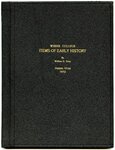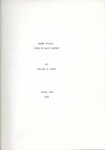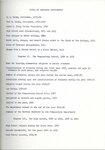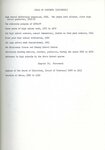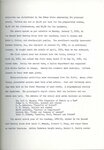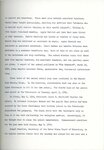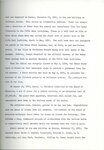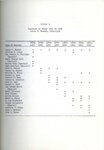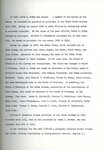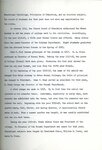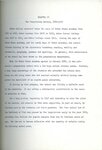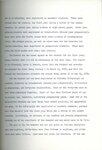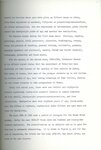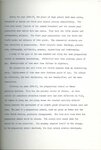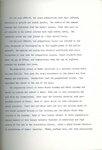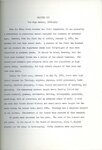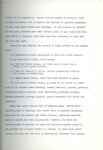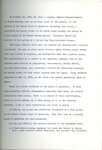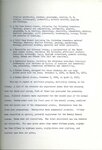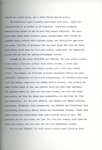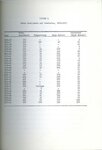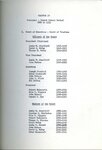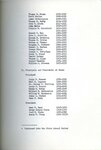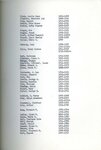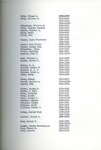| Title |
Weber College: Items of Early History |
| Creator |
Terry, William Z. |
| Description |
Weber College: Items of Early History contains information about the founding of Stake Weber Academy and its evolution from preparatory and high school to junior college. The document includes enrollment figures from 1895 to 1922 and school personnel lists from 1888-1933. |
| Subject |
Weber College--History; Weber College--Faculty; Community college presidents; College teachers; College attendence--Utah--Statistics |
| Digital Publisher |
Stewart Library, Weber State University, Ogden, Utah, USA |
| Date Original |
1952 |
| Date |
1952 |
| Date Digital |
2015 |
| Temporal Coverage |
1888; 1889; 1890; 1891; 1892; 1893; 1894; 1895; 1896; 1897; 1898; 1899; 1900; 1901; 1902; 1903; 1904; 1905; 1906; 1907; 1908; 1909; 1910; 1911; 1912; 1913; 1914; 1915; 1916; 1917; 1918; 1919; 1920; 1921; 1922; 1923; 1924; 1925; 1926; 1927; 1928; 1929; 1930; 1931; 1932; 1933 |
| Item Size |
8.75 inch x 11.25 inch |
| Medium |
books |
| Item Description |
37 page hardback book. It has a black cover with gold lettering. |
| Spatial Coverage |
Ogden, Weber County, Utah, United States, http://sws.geonames.org/11788968, 41.22809, -111.96766 |
| Type |
Text |
| Conversion Specifications |
Archived TIFF images were scanned with an Epson Expression 10000XL scanner. OCR by ABBYY Reader. JPG and PDF files were then created for general use. |
| Language |
eng |
| Rights |
Materials may be used for non-profit and educational purposes; please credit University Archives, Stewart Library, Weber State University. |
| Source |
LB2193.W4 T47 1952 Weber State University Archives |
| Format |
application/pdf |
| ARK |
ark:/87278/s6d7m4ye |
| Setname |
wsu_hp |
| ID |
105720 |
| Reference URL |
https://digital.weber.edu/ark:/87278/s6d7m4ye |
| Title |
Page 24 |
| Creator |
Terry, William Z. |
| Description |
Weber College: Items of Early History contains information about the founding of Stake Weber Academy and its evolution from preparatory and high school to junior college. The document includes enrollment figures from 1895 to 1922 and school personnel lists from 1888-1933. |
| Subject |
Weber College--History; Weber College--Faculty; Community college presidents; College teachers; College attendence--Utah--Statistics |
| Digital Publisher |
Stewart Library, Weber State University |
| Date Original |
1952 |
| Date |
1952 |
| Date Digital |
2015 |
| Temporal Coverage |
1888-1933 |
| Item Description |
8.75 x 11.25 in. hardback. 37 pages of content. |
| Spatial Coverage |
Ogden, Weber County, Utah, United States, http://sws.geonames.org/11788968, 41.22809, -111.96766 |
| Type |
Text |
| Conversion Specifications |
Archived TIFF images were scanned at 400 dpi with an Epson Expression 10000XL scanner. OCR done with ABBYY Reader. JPG and PDF files were created for general use. |
| Language |
eng |
| Rights |
Materials may be used for non-profit and educational purposes; please credit University Archives, Stewart Library, Weber State University. |
| Source |
University Archives LB2193.W4 T47 1952 |
| Format |
application/pdf |
| Setname |
wsu_hp |
| ID |
105967 |
| Reference URL |
https://digital.weber.edu/ark:/87278/s6d7m4ye/105967 |

